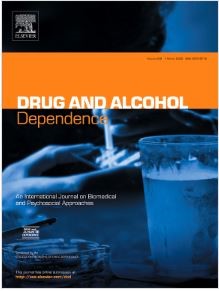 Early initiation of alcohol use may not only increase the risk of problematic drinking and alcohol disorders but also trigger a cascade of emotional, physical, and social problems later in life. Therefore, early adolescence (ages 12–14 years), the period when alcohol initiation commonly escalates, has been targeted as a critical period for prevention to reduce alcohol-drinking-related negative consequences. An increasing number of studies have implicated alcohol expectancies (AEs) as an important cognitive marker for the initiation and progression of problem drinking behaviors in the underage population. Dr. Chuan-Yu Chen, a joint investigator with the Center for Neuropsychiatric Research and her research team identified patterns in the changes of endorsed positive AEs through early adolescence and examined associated childhood social context predictors of such profiles.
Early initiation of alcohol use may not only increase the risk of problematic drinking and alcohol disorders but also trigger a cascade of emotional, physical, and social problems later in life. Therefore, early adolescence (ages 12–14 years), the period when alcohol initiation commonly escalates, has been targeted as a critical period for prevention to reduce alcohol-drinking-related negative consequences. An increasing number of studies have implicated alcohol expectancies (AEs) as an important cognitive marker for the initiation and progression of problem drinking behaviors in the underage population. Dr. Chuan-Yu Chen, a joint investigator with the Center for Neuropsychiatric Research and her research team identified patterns in the changes of endorsed positive AEs through early adolescence and examined associated childhood social context predictors of such profiles.
Dr. Chen and her research team used three waves of longitudinal data from the Alcohol-Related Experiences among Children. The baseline sample comprised 928 6th graders from 17 elementary schools in northern Taiwan (response rate = 60 %); subsequent follow-up was conducted at 7th and 8th grade (follow-up rate = 88 %). Data concerning three domains of positive AEs (i.e., global positive transformation, enhancing social behaviors, and promoting relaxation), social context, and alcohol drinking were collected by self-administered questionnaires. Longitudinal latent profile and survey multinomial logistic regression analyses were used to evaluate the association estimates, stratified by childhood alcohol initiation.
The research team found that three distinct profiles (decreasing, stable, and increasing) of positive AEs were identified for the alcohol-naive children (n = 466); observing paternal drinking and watching TV more than two hours per day at baseline were strongly linked with the stable and increasing AE profiles (aOR = 1.96-4.80). For the alcohol-experienced children, four profiles (low decreasing, low increasing, high decreasing, and high increasing) emerged; observing maternal drinking was predictive for the high-increasing profile (aOR = 2.94). Regardless of childhood alcohol initiation, recent alcohol use appeared to be the strongest predictor for the increasing profiles of positive AEs. The findings suggest that strategies addressing pro-alcohol social contexts that facilitate a prominent increase in positive AEs should be considered when devising preventive programs targeting underage drinking behaviors and problems.
Citation: Chen, WT; Wang, N; Lin, KC; Liu, CY; Chen, WJ; Chen, CY. Childhood social context in relation to alcohol expectancy through early adolescence: A latent profile approach. Drug and Alcohol Dependence. 2020 Mar 1;208:Article number 107851.
